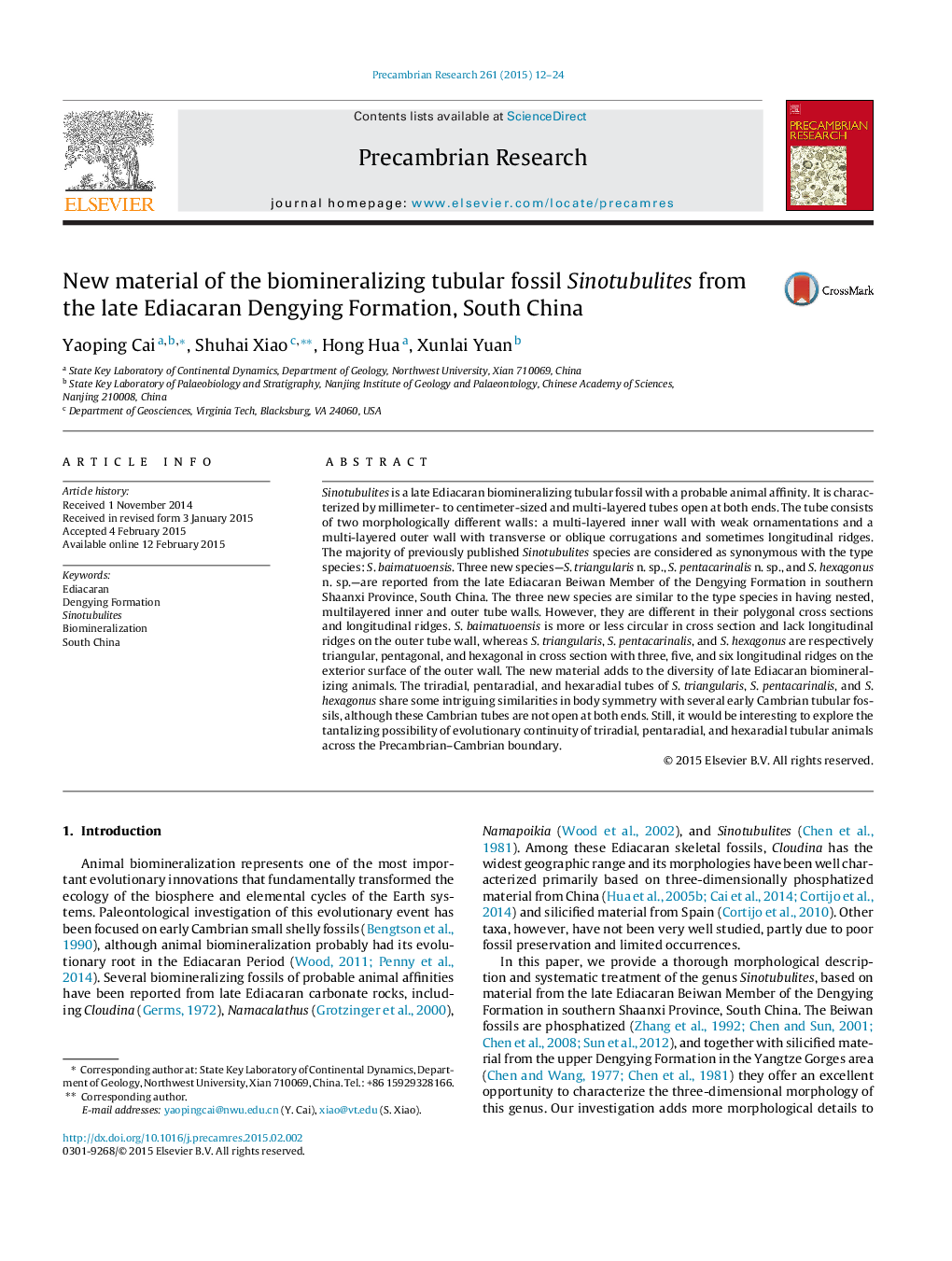| Article ID | Journal | Published Year | Pages | File Type |
|---|---|---|---|---|
| 4722710 | Precambrian Research | 2015 | 13 Pages |
•Description of three new species of the biomineralizing animal Sinotubulites.•Detailed illustration of tube morphology and microstrutures of Sinotubulites.•Systematic re-evaluation of all published Sinotubulites fossils.
Sinotubulites is a late Ediacaran biomineralizing tubular fossil with a probable animal affinity. It is characterized by millimeter- to centimeter-sized and multi-layered tubes open at both ends. The tube consists of two morphologically different walls: a multi-layered inner wall with weak ornamentations and a multi-layered outer wall with transverse or oblique corrugations and sometimes longitudinal ridges. The majority of previously published Sinotubulites species are considered as synonymous with the type species: S. baimatuoensis. Three new species—S. triangularis n. sp., S. pentacarinalis n. sp., and S. hexagonus n. sp.—are reported from the late Ediacaran Beiwan Member of the Dengying Formation in southern Shaanxi Province, South China. The three new species are similar to the type species in having nested, multilayered inner and outer tube walls. However, they are different in their polygonal cross sections and longitudinal ridges. S. baimatuoensis is more or less circular in cross section and lack longitudinal ridges on the outer tube wall, whereas S. triangularis, S. pentacarinalis, and S. hexagonus are respectively triangular, pentagonal, and hexagonal in cross section with three, five, and six longitudinal ridges on the exterior surface of the outer wall. The new material adds to the diversity of late Ediacaran biomineralizing animals. The triradial, pentaradial, and hexaradial tubes of S. triangularis, S. pentacarinalis, and S. hexagonus share some intriguing similarities in body symmetry with several early Cambrian tubular fossils, although these Cambrian tubes are not open at both ends. Still, it would be interesting to explore the tantalizing possibility of evolutionary continuity of triradial, pentaradial, and hexaradial tubular animals across the Precambrian–Cambrian boundary.
